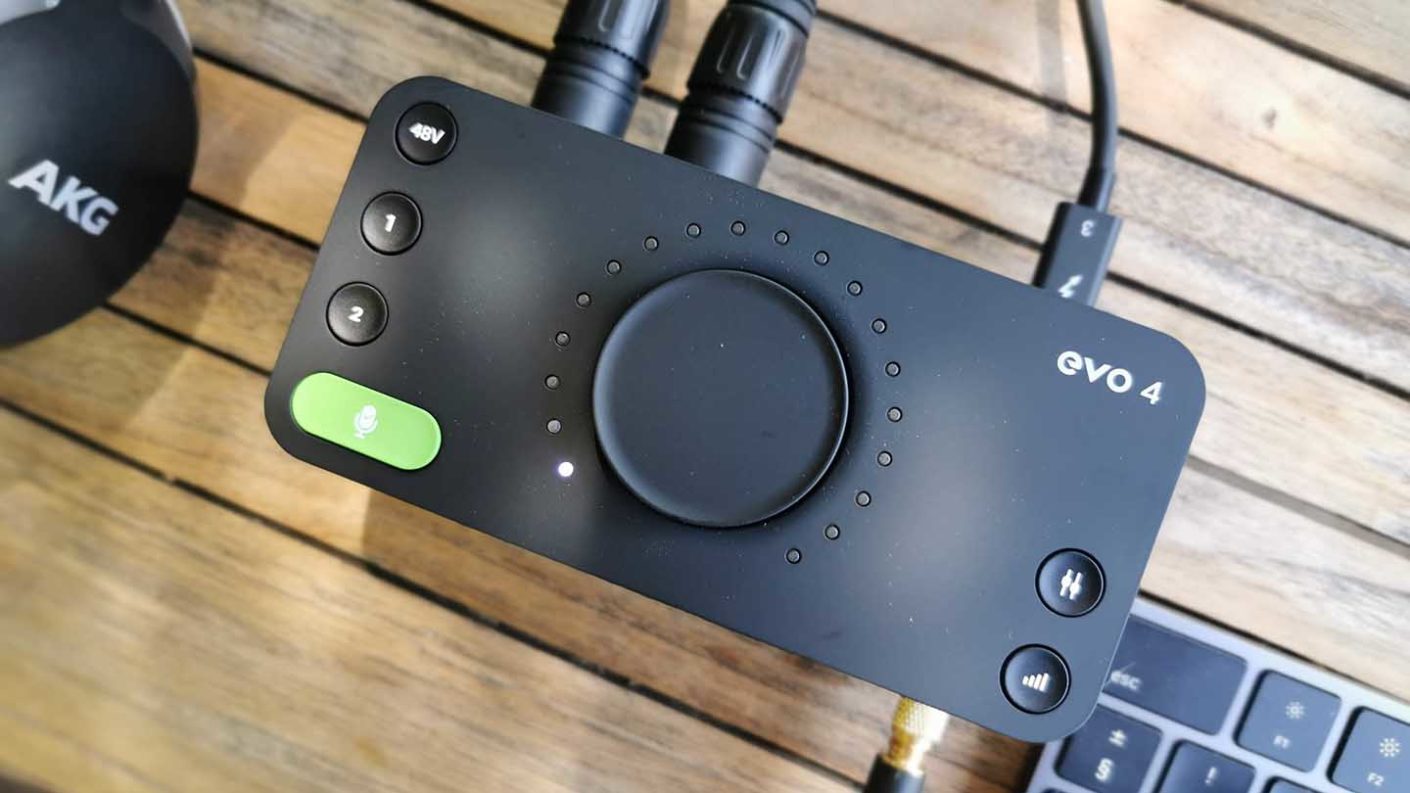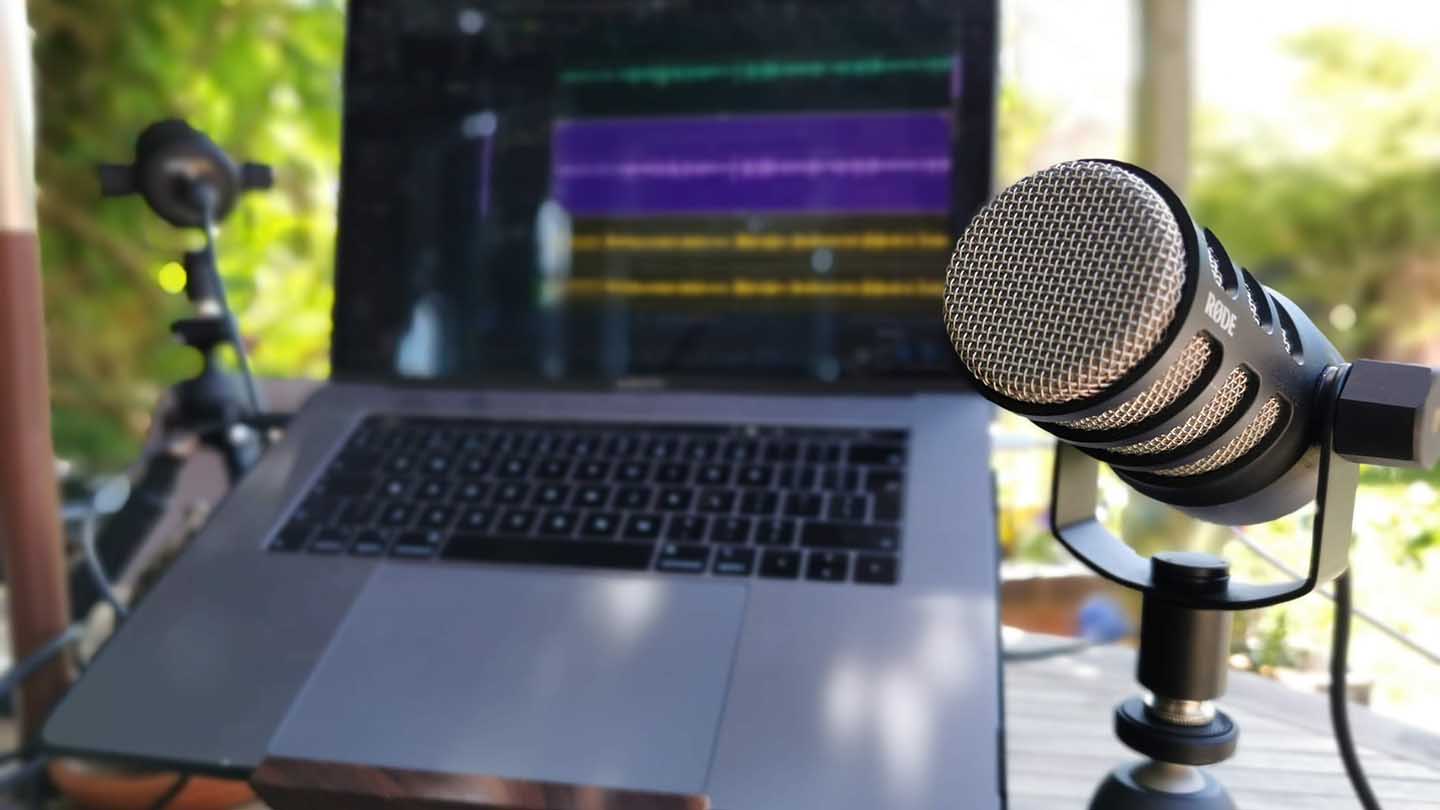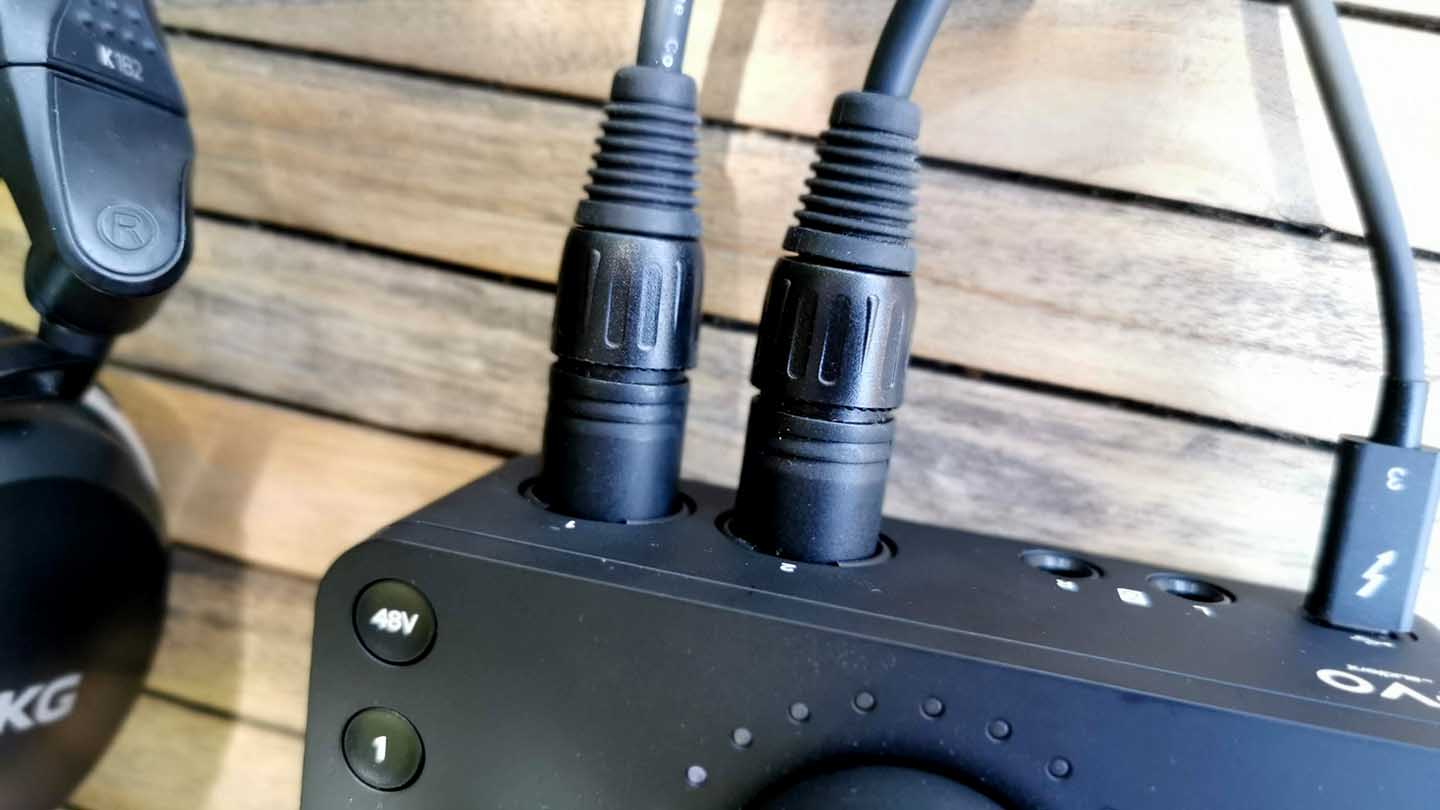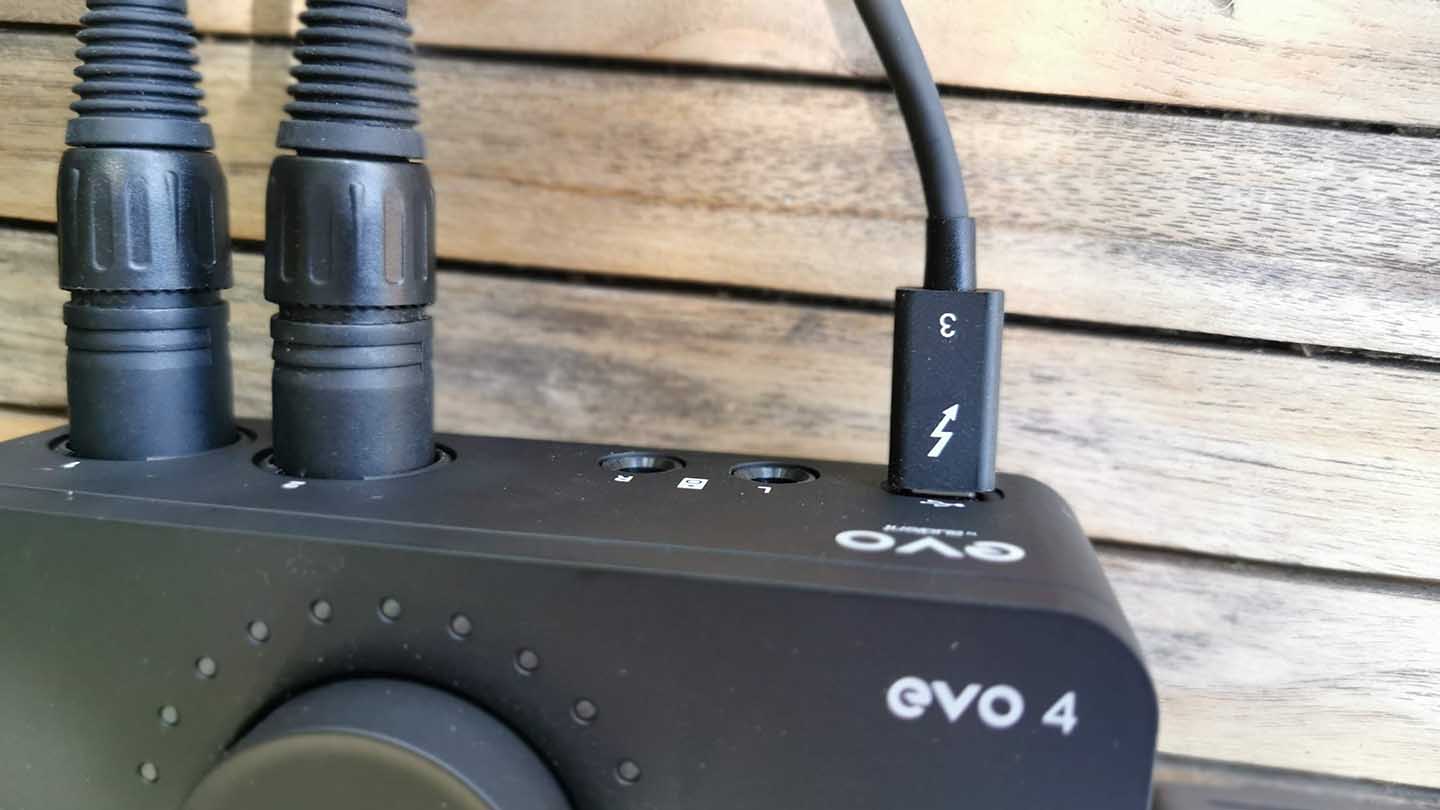The EVO 4 looks great and has a nice matt black finish, the dials and buttons all feel good, and overall it’s of a decent quality. Although not an issue, squeeze the sides of the EVO 4 and you can feel that the plastic is relatively thin, however, it all seems robust enough to survive in a kit bag.
Setting up with two mics is as simple as plugging them into the EVO 4, inserting the USB between the box and computer and then you’re almost set to go.

If you’re looking at setting up on a Mac, you can then select the EVO 4 as the audio input and with two mics attached you have your left and right channels.
Pop into an application such as Adobe Audition, select the audio input and output as the EVO 4, then Line 1 and Line 2 for the channels and ensuring headphones are plugged in, or speakers and you’re ready to record.
The EVO 4 handles all of the hard work for you.
Adjusting the input and output volumes is as easy as taping the input or output button and rotating the dial, small led lights around the dial show the amount of increase or decrease.
If you’re not 100% sure what you need to do then hitting the Smartgain button will automatically set the gain for you.
In manual mode where you adjust the input gain, the LEDs flash to show the audio levels.
On the front, there’s an instrument in socket. This takes a 1/4 plug, and as soon as anything is plugged into this port, it overrides channel 1, and again all the options and settings can be adjusted in the same way.
As I mentioned earlier, the type of socket used for the two main inputs is a combi connector. This means that it will take both an XLR and 1/4-inch, so can be used for microphones or instruments.
The biggest feature during my testing became the loopback. This essentially enables you to loopback the audio from your computer as a source.
Setting this up is a little bit more complex than the direct plug-in cable approach, but it’s by no means difficult, especially because of the videos created by Audient.
Through this test, I have to say that the quality of documentation and video how to’s by Audient are just about the best I’ve seen. They’re easy to follow and get you the results you’re after.










